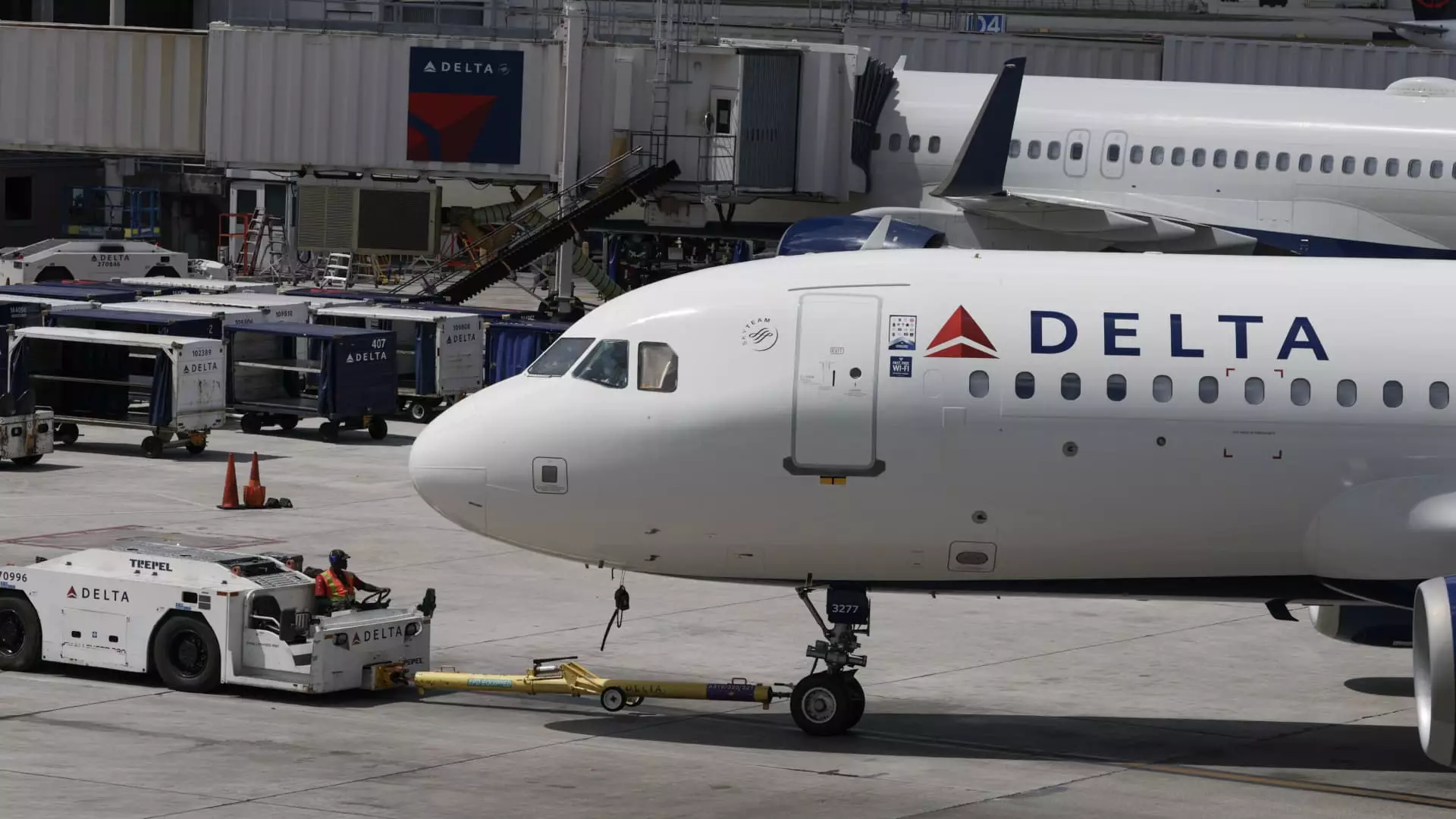In an era where headlines trumpet record-breaking highs, it’s tempting to succumb to the glow of euphoria. However, beneath the veneer of the S&P 500 soaring over 25% from April lows lies a complex narrative marked by disparity and underlying fragility. While investors celebrate the seemingly unstoppable ascent, the reality for many constituents remains bleak. This paradox demands a critical examination: is this rapid recovery genuine, or is it an illusion masking deeper vulnerabilities? The stock market’s resilience, in this context, appears more like a strategic mirage—an overstated narrative that distracts from the true economic signals of stagnation and imbalance.
The broader index’s remarkable rebound is largely driven by a select handful of tech giants and large-cap stalwarts. For example, the airline sector’s muted performance highlights a different story—one of persistent underperformance amid the euphoric rally. Delta Air Lines, despite its potential for short-term gains, remains over 25% below its pre-February highs. This inconsistency starkly illustrates that not every segment is riding the wave of optimism. If anything, it points to a divergence in investor confidence and underlying economic fundamentals—an issue that cannot be ignored when assessing market health.
The Flight of Airlines: An Underpriced Sector or an Overextended Bet?
Airline stocks serve as a cautionary example of tumult within the latest market rebound. While the sector’s modest reduction in fuel costs offers some relief, rising labor expenses threaten to negate those gains. The expectation that fuel will dip to around $2.30 per gallon has investors hopeful, yet the forecasted 7% increase in wages could easily offset this benefit. This delicate balancing act exemplifies a wider theme: the market’s optimism is predicated on optimistic assumptions about cost reductions that may never fully materialize.
Furthermore, the capacity expansion by US airlines—outpacing even GDP growth—is a risky gamble. It signals a potential over-saturation of the domestic market, where fierce competition could lead to deteriorating fares and margins. If airlines continue to flood the market with additional seats, the premium pricing that was once lucrative could diminish, exposing these companies to further underperformance. This sector’s current valuation, with a lower-than-average P/E ratio, might seem attractive on paper, but caution is warranted. It suggests that the market’s perception of value is possibly distorted by broader bullish sentiment, ignoring the structural risks that threaten to undermine gains.
Market Psychology and the Options Playbook
The options market’s implied volatility reveals a palpable tension beneath the surface. A 7% post-earnings move expectation indicates that investors are bracing for significant volatility, reflecting uncertainty around upcoming quarterly reports. Strategically, some are banking on volatility’s spike to generate short-term gains, as seen in their calendar spread bets—selling near-term calls and puts while holding longer-term positions. However, such strategies are inherently speculative and highlight a broader overconfidence in short-term market stability.
This pattern underscores a critical flaw in current investor psychology: the complacency that an ongoing rally can persist without meaningful correction. The recent underperformance of sectors like airlines compared to the index’s rally signals a divergence that savvy investors should heed. The persistent optimism risks becoming self-fulfilling, yet it also invites the possibility of a sudden correction if macroeconomic headwinds—such as rising wages, geopolitical tensions or inflation—reassert themselves and shatter the fragile illusion of invincibility.
A Disconnected Market and the Danger of Overconfidence
Ultimately, the market’s impressive recovery appears less like a testament to economic vitality and more akin to a rally built on speculative fervor. Risk factors—including rising costs, capacity oversupply, and geopolitical uncertainties—remain unaddressed by the current optimistic narrative. The disconnect between the broad index and its lagging constituents should serve as a warning, not a reassurance.
Investors with a center-right, pro-liberal perspective should recognize that the market’s current trajectory is possibly overextended, driven by a desire to escape the economic fears of recent years. A disciplined, cautious approach grounded in realistic valuations and macroeconomic fundamentals is essential. Our economic environment demands skepticism, not blind faith, and any complacency now risks turning a speculative rally into a painful correction. The signs are there for those willing to look past the hype and see the cracks in the facade—an overconfident market ripe for a reality check.

